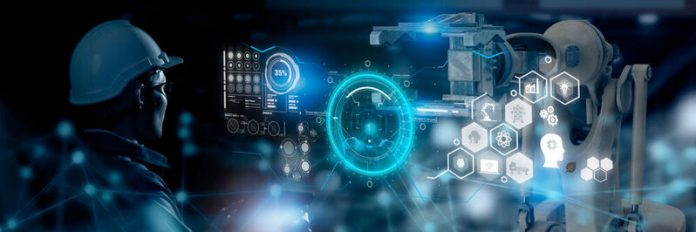5G and Artificial Intelligence
The Internet of talking Machines
Related providers
So far, people have been talking to each other through communication networks. This is changing: more and more machines and systems are exchanging information with each other. The network infrastructure must be able to adapt to this.

(Picture: © Epstudio20 – stock.adobe.com )
Alexander Graham Bell is considered the inventor of the telephone. But in truth, the phone had a lot of dads. There was, for example, the German physicist Philipp Reis. He had succeeded in converting sound waves into electrical vibrations and in converting audible signals back to the other end of the wire connection.
But back to Bell: he is said to have once said to his assistant: “Mr. Watson, come here, I want to see you.” Telephony has laid the foundation for our modern communication. After the phone came fax and finally e-mails to the networked machines.
Not only people, but more machines talk to each other
If it was mainly people who had previously communicated with each other or even with machines, this is already changing. Because network traffic in the next few years will focus primarily on communication between machines. More and more machines and systems are talking to each other. Communication via the Internet of Things (IoT) is the next step in translating almost every conceivable physical process into electronic data via sensors and other devices.
The machines generate a very large amount of data, which is transmitted directly to other machines and finally fed into the global cloud. The large amounts of data are stored, processed and finally analyzed with clever algorithms. Only then will they be understandable and usable for us humans.
Sensors collect data, algorithms evaluate it
The number of sensors will be in the billions. And the sensors pass on their information to algorithms. Artificial intelligence and machine learning become even smarter with each byte of data processed.
When algorithms learn from the vast amounts of data, they also speak of massive Machine Type communication or mMTC for short. Translated into German, this means as much as “highly machine-based communication”.
But there is a risk of collecting a lot of useless information. A sensor on a machine can collect thousands of hours of information, but it is meaningless. But if the machine behaves differently, for example if it vibrates, then suddenly the information generated is decisive for the machine and the safety of the people who operate it.
Secure machine communication and necessary resources
However, this unpredictability is not easy to handle for the network operators. The number of devices and applications used is almost unlimited. This also applies to the available computing power with which the data obtained can be processed. Broadband and wireless access networks such as 5G play a decisive role in this. Through these critical channels, the information is collected, accredited and forwarded directly to other machines or the cloud for further processing.
It is important for network infrastructure providers to adapt the requirements of the devices or applications. Network slicing is the sharing of network resources by several individual networks. This ensures that different machine-to-machine systems are both secure and are allocated exactly the resources they need. These include bandwidth, latency, coverage, and reliability.
It is impossible to imagine communication without 5G
The fact is: every sector of the economy will use IoT, edge computing, as well as artificial intelligence and machine learning. This allows companies to optimize their processes. In addition to LTE, 5G will help to connect more and more sensors and devices. Nick Cadwgan, IP Networks Marketing, at Nokia, sees “5G being used in autonomous vehicles and transportation systems, power grids, transportation networks, ports, containers and airports.“
Networking has always been about communicating with other people. But now the machines are talking to each other. 5G allows not only communication with people, but also, thanks to its characteristics, the exchange between machines. It is the network that equates machine communication with human communication.
(ID:48393768)

